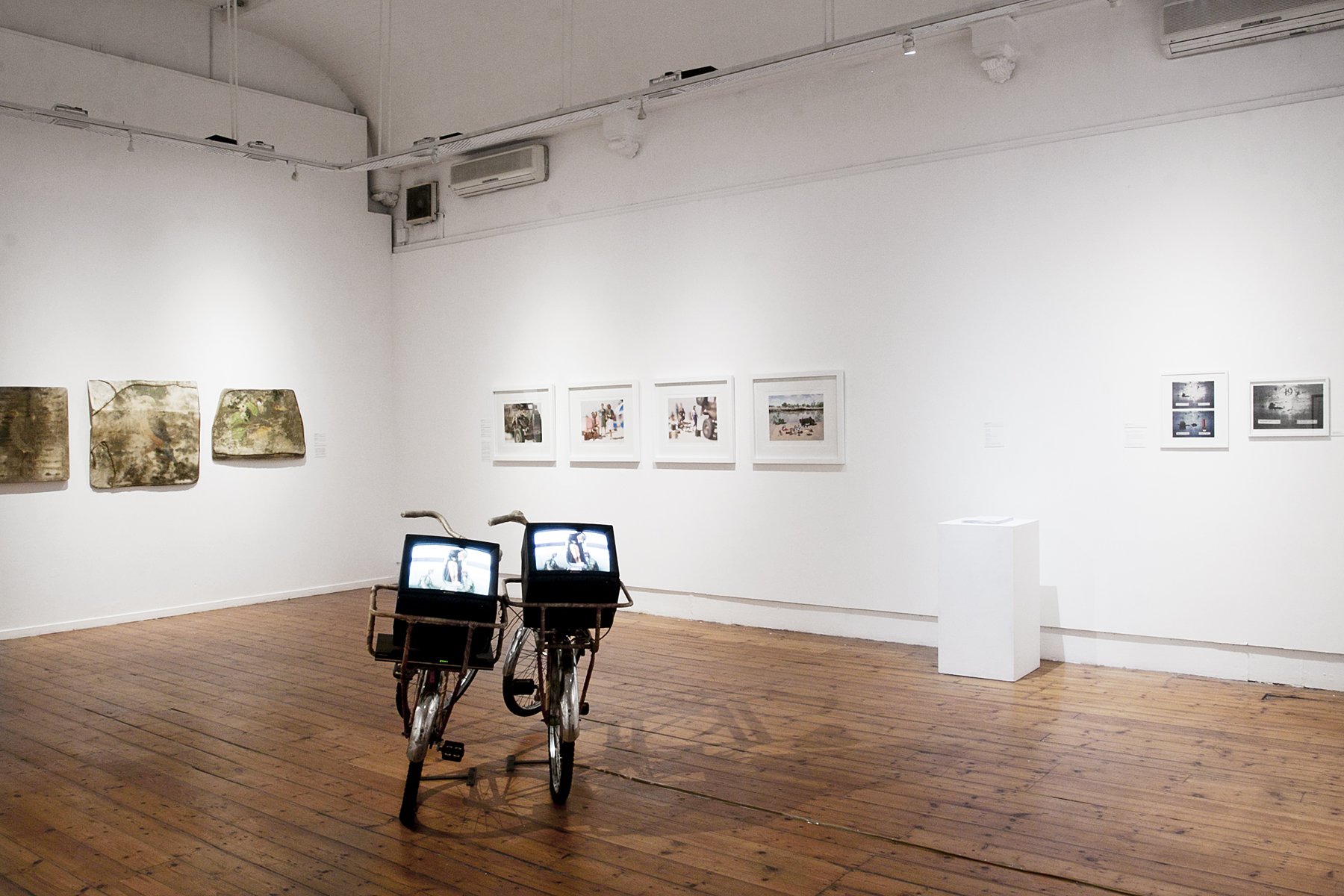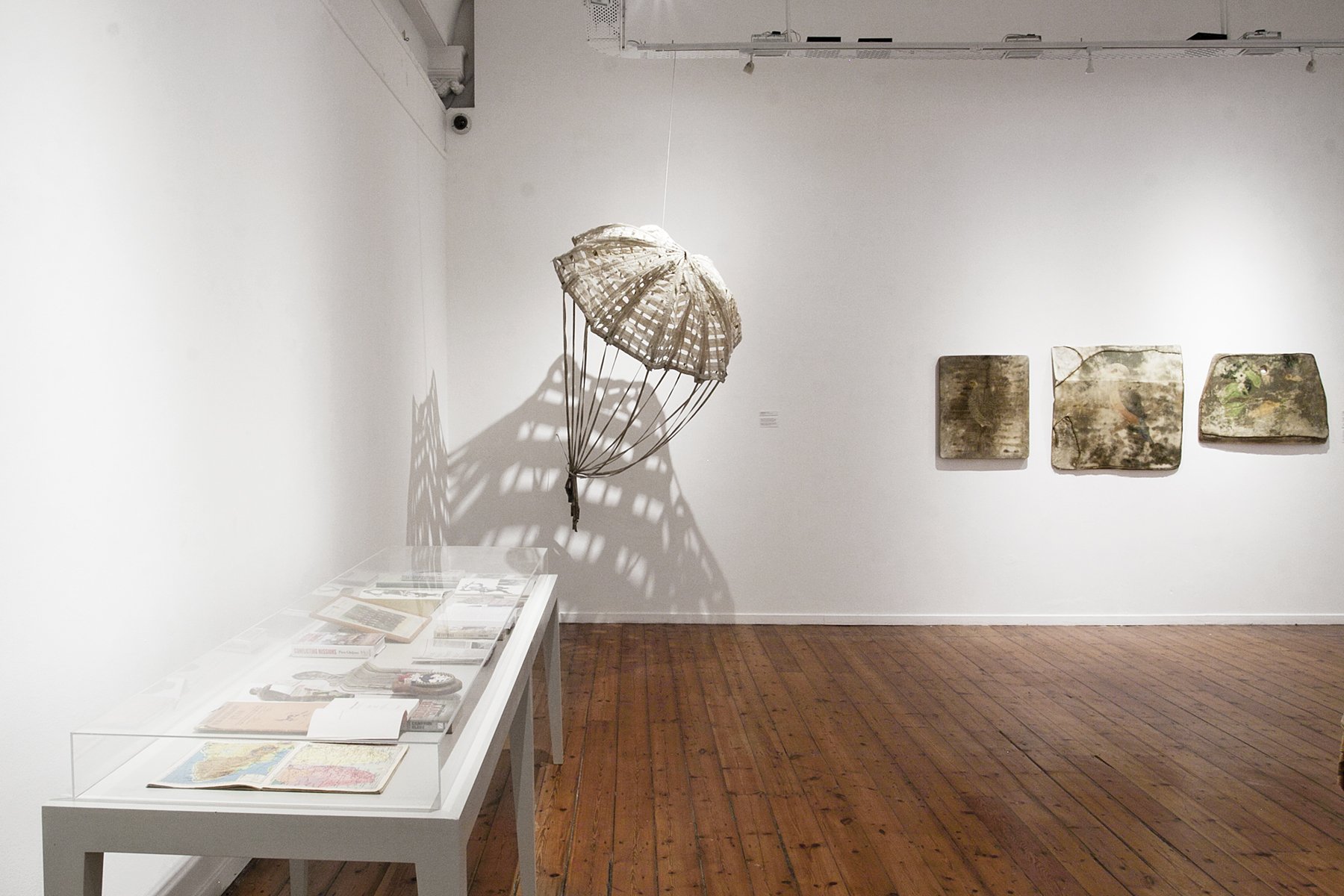‘Not My War’
*Curatorial Project. Michaelis Galleries, Cape Town.
The Michaelis Galleries and the Gordon Institute for Creative and Performing Arts (GIPCA) present Not My War, an exhibition of works by significant South African artists reflecting on the country’s involvement in border wars in Northern Namibia and Southern Angola during the 1960ies to the 1980ies. The exhibition opening is at 18:00 on 29 June, and it will run until 25 July.
Up until 1994, almost all able-bodied white South African men were called up for National Service around the year they turned 18. Most were put through rigorous physical and skills training, and many were sent to fight in South Africa’s so-called Border War in Northern South West Africa and Southern Angola.
Marking the 25th anniversary of what is now commonly referred to as the Border War’s bloodiest and most decisive battles, most notably at Cuito Cuanavale, Not My War looks at how a selection of artists have been impacted by and responded to this critical point in the nation’s history.
Since the shift in political power in 1994, many of the men who fought in the Border War have felt themselves to be recast in an insidious light. While many soldiers believed the SADF’s rhetoric that they were fighting in Angola to shield their country from the violent tide of communism, the war is now widely regarded as an unjust conflict that upheld the racist interests of Apartheid. The Border War has in many ways become forgotten in post-Apartheid South Africa, as remembering this ‘silent war’ it would mean – both on an institutional and personal level – engaging the struggle to reconcile the propaganda, trauma, heroism and racism implicit in a discussion of its nature.
In recent years, however, a large amount of material concerning South Africa’s Border War in Namibia/Angola has burst onto the cultural landscape. Where a decade ago such material was scarce, in the last five years there has been a considerable surge of novels, biographies, documentaries, films, theatre, photography and visual art all dealing with this subject. It would seem that the muzzle on South Africa’s ‘silent war’ – in the cultural sphere at least – has begun to lift.
Furthering the resurgence of dialogue around this ‘silent war’, Not My War will endeavour to engage the complex personal and institutional discourse surrounding this conflict, as well as highlight the war’s continuing relevance and effect on South African society.
The exhibition is curated by David Brits, and participating artists are Wayne Barker, Christo Doherty, Paul Emmanuel, John Liebenberg, Jo Ractliffe, Colin Richards, Chad Rossouw, Penny Siopis, Christopher Swift and Gavin Younge. Exhibition and catalogue text by Natasha Norman.











In the Foxholes of History
An esssay by Natasha Norman
Border War. The War of Liberation. The Bush War. The Angolan War. The War in the North. The very naming of this war denotes the conflict of ideologies inherent in its opposing forces.
The term ‘Border War’ generally considers what happened in Namibia and Angola from the mid-60s through to the ‘80s from the South African perspective. Historian, Patricia Hayes, points out in a catalogue essay for John Liebenberg’s Bush of Ghosts that:
Namibians do not use the term. For most Namibians this long war in the late 20th century was the war of liberation, Ekondjo ye Manguluko. (Hayes 2010: 10)
‘Border War’ is in fact an exceedingly vague term as to the geographical fronts on which the war was fought: ‘border’ referring to an Angolan/Namibian, Namibian/South African or the South African/Botswanan political-geographical divide. Later South African conscripts found themselves deployed as riot police in the black/white political-geographical divides instated within the nation by the Group Areas act. For the SADF the ‘border’ appears to be more the conceptual border of South Africa with the rest of Black Africa (Hayes 2010:10).
NOT MY WAR positions itself quite clearly in a post-apartheid rhetoric. It draws great inspiration from a particular exhibition forerunner Memórias Ìntimas Marcas that was initiated by Fernando Alvim, an Angolan artist and curator. Together with Cuban artist, Carlos Garaicoa, and South African artist, Gavin Younge, Alvim arranged for a twelve-day stay in Cuito Cuanavale - the site of one of the bloodiest battles between Angolan, Cuban and South African forces that was instrumental in the ending of the war. The artists were chosen specifically for their lack of direct involvement in the war, with Alvim encouraging them to give their personal view on the issue. Rather than the quest for an ‘official’ version of this history, Memórias Ìntimas Marcas was unique at the time in its quest to engender dialogue in a site of so much emotional and physical ‘indigestion’ as Alvim has described it. It is this desire to open up the history of the event rather than to close it in official readings that has so inspired the intentions behind this exhibition.
As the son of a conscripted man, curator David Brits is at pains to broker an engagement with his nationalist history. From the perspective of post-apartheid historical awareness, Brits recognises his ancestry that subscribed to ideologies presenting the ‘Border War’ as a necessity but tries to discern what this heritage of political brainwashing has left the new South African nation.
The recent growth in an emerging white discourse of the Border War is powerfully cathartic, however new borders are likely to emerge in this discourse if it is not kept within the perspective of a larger socio-political framework. The individual or collective self-referentiality that recent memoirs and accounts have evoked in the cultural sphere are in danger of constituting a genre of ‘white hell’ that very rarely engages with the consequences of how these experiences impacted the ‘someone else’ on the opposite side of the conflict. (Hayes 2010:11) Photographer John Liebenberg has raised a concern over the truthfulness of memoirs being published in the last ten years. The danger of accounts of this war as ‘books of bravado’ is that human rights abuses will remain uncovered by the rhetoric. He is particularly concerned about the lack of discussion about the Koevoet detention centres in Namibia (Corrigall 2011:7).
But whichever side of the conflict the participants were on, this war on the Namibian and Angolan border has undeniably been a site of severe emotional and physical wounding, the pathological cruelty of which has been exported to civilian populations across Southern Africa by war veterans. In South Africa, recent accounts by conscripts speak of the residual trauma of memory and the feelings of guilt over their complicity in a state-instituted genocidal aggression.
Evidence given in the trial of Eugene de Kok (the butcher of Vlakplaas) suggests that he too suffered post-traumatic stress symptoms after his Angolan service. This offers a substantial challenge to the clear rhetorical binary of victim and victimiser in such instances. The complicity of the war in the later acts of terror and torture within South African society has led David Bunn to assert the war as ‘that place beyond the pale where the refinements of torture were perfected and then exported back to South Africa, mutilating tortured and torturers alike’ (1997: 32).
Angola. The Border War. The War of Liberation. Ekondjo ye Manguluko. The war in the North. That abstract place ‘on the border’ where brothers and boyfriends, fathers and uncles did their military service against Communists and Cubans. A place of myth. Stories of death and heroes: terrs, foxholes, Victor Victor and jumping jacks. There, over the red line the risk/reward equation of life when the enemy is near.
Whether it was their war or our war or NOT MY WAR, this war came home to us because the veterans took it home with them.
Bibliography:
Alvim, Fernando and Kellner, Clive. 1998. Deflagration or difumbe? Exhibition catalogue of Memórias Intimas Marcas. Marcas News: Johannesburg.
Bunn, D. 1997 in Younge, G. 2007. Prothesis. Exhibition catalogue. Le Noire Galerie: Paris. P29-37.
Corrigall, M. 2011. ‘The Silent War’. The Sunday Independent. Life: Special Feature. August 28, 2011. p6-9.
Hayes, P. 2010. ‘Introduction: Photographs and Ghosts in the War for Namibia.’ in Liebenberg, J and Hayes, P. 2010. Bush of Ghosts. Umuzi: Cape Town. P9 – 25.
